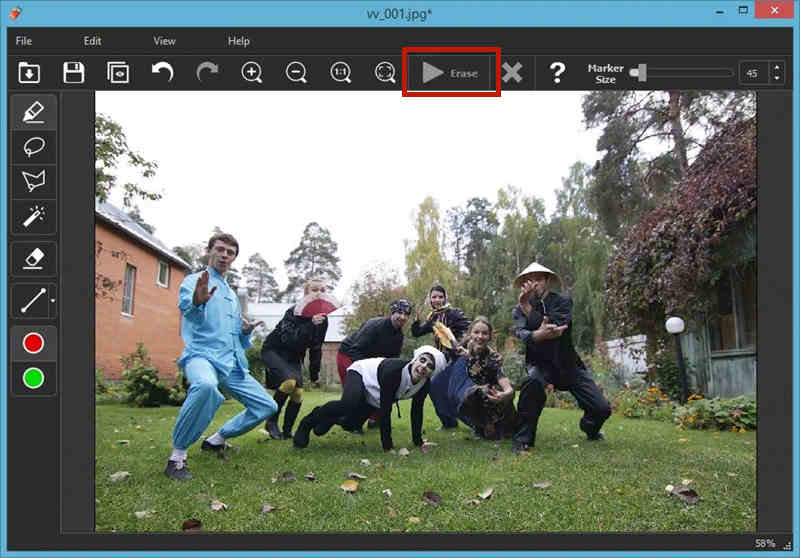
If the watermark takes a large portion on the image and stands across different surroundings, you need to do the erase bit by bit. Or we can use the Crop feature to cut out the watermark if it just stands a small proportion of the image in the corner. Right click on the watermark image and click Export to save the photo without watermark to other format.Once ready, click Erase to remove watermark.Press and hold Space bar to choose between brush tool and hand tool, zoom in to check the details. Use the brush tool to brush over the watermark, you can adjust the brush size.Go to Catalog> Add Photos> Add Folder or Add Image.
INPAINT WATERMARK INSTALL
INPAINT WATERMARK PROFESSIONAL
Professional editing: supercontrast and color harmony.Creative editing: relight, sky replacemet, atmosphere, sunrays, dramatic, mood, toning, matte look, glow, film grain, etc.Essential editing: light, color, black & white, details, denoise, landscape, vignette.Add as plug-in to Adobe Photoshop/Lightroom/PS Elements/Apple Aperture.AI-Powered: smart, intelligent, professional.It examines the surrounding pixels and create a new texture based on awareness of what’s near by the brushed area, which makes the watermark-removed photo natural and no trail of erasing. Luminar Neo can remove watermark, remove person, power line, dust spots or other unwanted objects from your photos easily.

Is there any tool helps to remove watermark from photo with one click? Yes, there is. In the following, you will find 3 good tools to remove watermark from pictures. Taking out watermark from your photos can be challenging, it is more than cropping the watermark, we often use Heal (Erase) or Clone to eliminate the watermarks for prefect looking, without changing the original image quality or messing it with watermark removal traces. Best Ways to Remove Watermark from Photo (Mac & Windows) This ensures that each object’s filler matches the surrounding area as well as possible.Part 1. This approach to replacing objects means that if you’ve got multiple objects to remove from a photo, you’ll get better results by marking one object and processing the photo, then marking the next object and processing again, and so on. Before processing a photo, you can manually resize this rectangle to increase or reduce the size of the sample area. Inpaint lacks documentation, but based on my testing, it appears that this rectangle designates which parts of the photo Inpaint uses to create filler to replace the removed object(s).

Still, for a $4 program, Inpaint’s results are very good, and if the result isn’t perfect-sometimes you’ll see a stray blotch, or a darker or lighter area, where an object was removed-you can mark that area and reprocess the photo to get a better result.Īs you mark an object for removal, a rectangle encompasses the marked portion(s) of the photo, along with some of the surrounding unmarked area. Inpaint’s effectiveness also depends on the size and detail of the object(s) you’re removing and the intricacies and uniformity of the surrounding area. This works surprisingly well-shockingly well at times-although it won’t match a professional retouching by a Photoshop master: If you zoom in on a higher-resolution image, a sharp eye may spot some slightly blurry areas where Inpaint modified the photo. Click the Inpaint button in the toolbar, and the program works its magic, removing the marked areas and, even more impressive, automatically surveying the surrounding areas of the photo to generate realistic-looking filler.


 0 kommentar(er)
0 kommentar(er)
